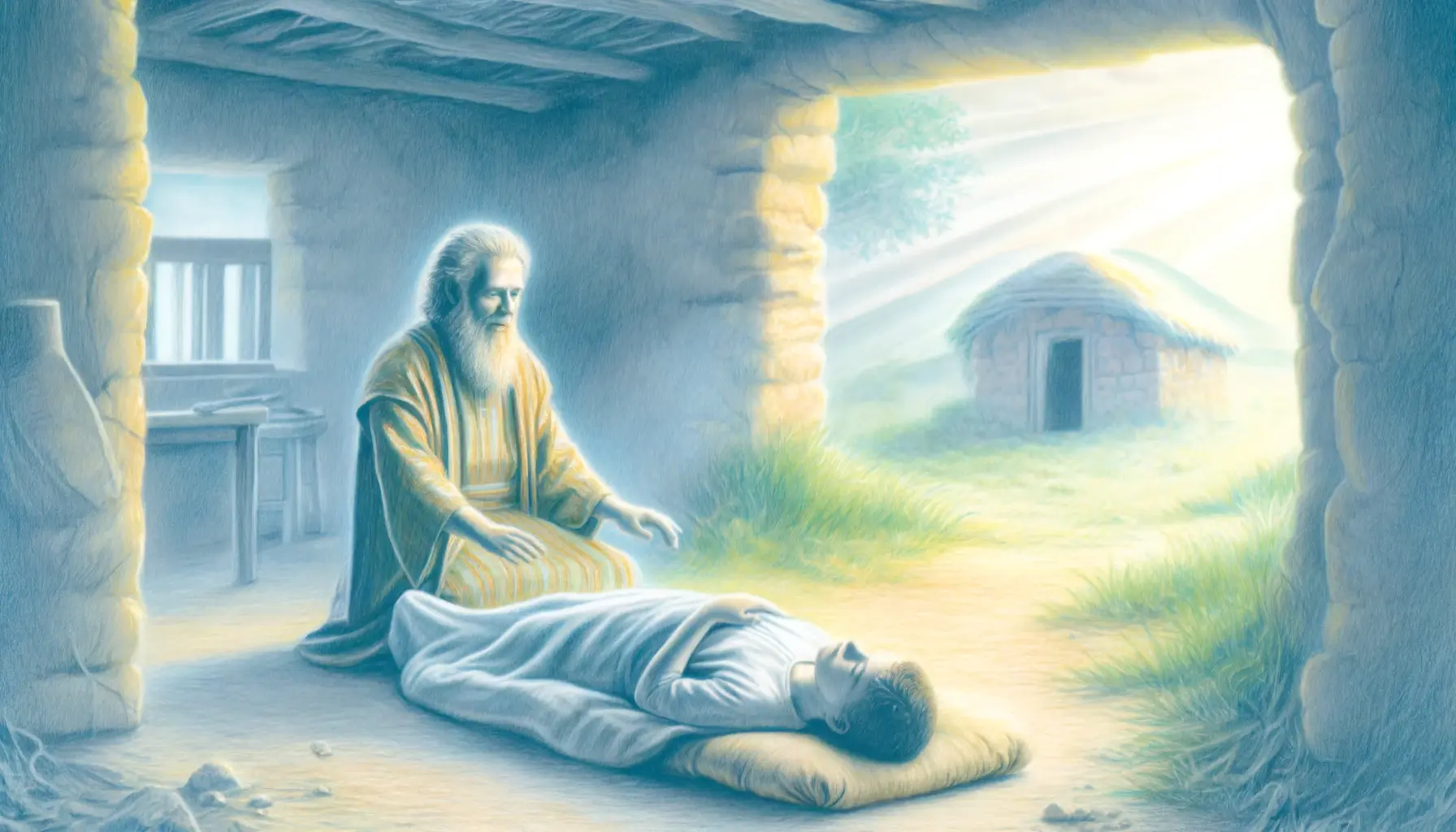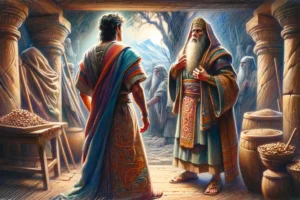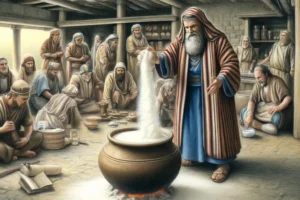
Resurrection of the Shunammite’s Son
The resurrection of the Shunammite’s son by Elisha, as recounted in 2 Kings 4:32-37, is a poignant biblical story that demonstrates God’s power over life and death through His prophet. Here are some quick facts about this event:
- Initial Miracle: The boy was born to the Shunammite woman as a result of Elisha’s promise, showcasing God’s blessing on her hospitality towards the prophet.
- Sudden Illness: The child later suffers a severe headache while in the fields with the reapers and dies shortly after being brought to his mother.
- The Mother’s Response: Demonstrating immense faith and composure, the Shunammite woman places her son on Elisha’s bed and immediately seeks the prophet for help, without notifying anyone of her son’s death.
- Elisha’s Intervention: Elisha returns with the woman to her home, where he prays to God and performs a miraculous act of lying over the boy’s body, which results in the boy’s resurrection.
- Significance of Actions: Elisha’s method of reviving the boy, involving physical contact and warmth, symbolizes the transfer of life and divine power.
- Restoration and Reunion: The story culminates with the child awakening and being returned to his mother, symbolizing restoration and divine mercy.
The resurrection of the Shunammite’s son in 2 Kings 4:32-37 is a powerful narrative embedded within the larger context of Elisha’s prophetic ministry. This story not only underscores the miraculous powers granted to God’s prophets but also deeply engages with themes of faith, loyalty, and divine intervention. Here’s a comprehensive analysis:
Background and Context
The Shunammite woman had previously shown great hospitality to Elisha by providing a room for him whenever he visited Shunem. In gratitude, Elisha prophesied that she would bear a son, despite her husband’s advanced age. The fulfillment of this prophecy initially confirmed God’s blessing. However, the subsequent illness and death of the child pose a theological challenge that the narrative resolves through a demonstration of God’s power over life and death.
Theological Themes
Divine Sovereignty Over Life and Death: The resurrection miracle starkly illustrates that life and death are under divine control, a comfort and assurance to the faithful that death is not the final word.
Faith in Action: The Shunammite woman’s actions embody profound faith. She does not resign herself to her son’s death but actively seeks out Elisha, reflecting her belief in God’s power to enact change against even the most final of circumstances—death.
Intercession of the Prophet: Elisha’s role in this narrative is central. He acts as an intermediary between God and the people, channeling divine power through his actions. The method of revival—laying upon the boy and imparting his own life force—symbolizes the close, personal nature of prophetic intercession.
Narrative Structure and Literary Devices
Dramatic Tension: The narrative builds tension by detailing the journey of the Shunammite woman to find Elisha and bring him back to her son. The reader is led through a sequence of actions that culminates in the miracle, enhancing the dramatic impact of the child’s revival.
Symbolism: The act of Elisha lying down on the child, mouth to mouth, and hand to hand, is laden with symbolic overtones of life transmission and personal sacrifice. This physical act symbolizes the impartation of life energy from the prophet to the child, which can be seen as a precursor to Christian beliefs in the transference of spiritual life from Christ to humanity.
Cultural and Historical Context
In the ancient Near Eastern context, hospitality towards holy men was highly valued, and the woman’s initial generosity towards Elisha sets the stage for the reciprocal nature of blessings and divine favor. This story also serves as a narrative reinforcement of the social and religious ethos regarding the treatment of guests and prophets.
Conclusion
The resurrection of the Shunammite’s son by Elisha is a multifaceted story that resonates with deep theological insights. It highlights the power of faith and the prophet’s role as a divine agent who mediates between God and humanity. This narrative offers a profound reflection on the themes of life, death, and divine sovereignty, encouraging believers to maintain faith in the face of despair and loss. The story not only asserts the miraculous capabilities attributed to Elisha but also illustrates a broader theological assertion of God’s ultimate authority over life.
Tag:2 Kings 4:32-37, Background, Biblical Story, Conclusion, Context, Cultural Context, divine intervention, divine sovereignty, Dramatic Tension, Elisha, Elisha's Intervention, Faith, Faith in Action, God's power, historical context, Initial Miracle, Intercession of the Prophet, life and death, Literary Devices, loyalty, Mother's Response, Narrative Structure, prophet, prophetic ministry, quick facts, Restoration and Reunion, resurrection, Shunammite’s son, Significance of Actions, Sudden Illness, Symbolism, Theological Themes
Leave A Reply
You must be logged in to post a comment.




1 Comment